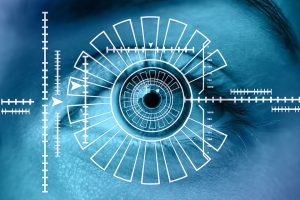The biometrics technology industry is growing in popularity, with projections that it would reach more than $19 billion last year. Biometrics is such a quick-and-easy way to identify an individual that it’s become commonplace as a security measure for many IoT digital devices and data protection infrastructure.
Biometrics is cutting-edge technology, but it’s still emerging. So, while it can be a great solution for your personal or company needs, it could also be a potential security concern. It’s important to understand what it is, how you can use it for security, and what you should keep in mind for the future.
What is Biometrics?
Biometrics is a digital process by which the characteristics of an individual are automatically recognized. Those unique characteristics could include facial feature recognition, a fingerprint map, retina scan, voice analysis, DNA analysis, or other unique data points that are used to differentiate that person from another.
While there are many applications to the technology, the goal is to seamlessly offer legitimate access to secure areas and devices without the time, hassle, or inconvenience of other more traditional password methods. Biometrics is already used widely in businesses, as well as in military installations, airports, and other sensitive areas.
How is Biometrics Used in Security?
Security uses biometrics to replace password systems for phones, computers, and other devices. It’s also used on a larger scale by corporations to secure access to restricted areas and as data protection solutions. It’s not the only solution currently available, but it is a front-line defense against security breaches that can be so detrimental to a company or organization.
Here are reasons why biometrics is used in security:
- Data Capture. Biometrics scanners are used to capture the biometric data from your body for use as identification.
- Database Validation. The scans are matched against variables stored in a database for verification purposes, so your fingerprints or other features are the keys to accessing the secured system.
It’s important to know your customer, which is often referred to as KYC, to be able to offer the solution that will best work for their unique security needs.
Why Is Biometrics Not a Spying Tool?
While biometrics is a popular and effective security measure for many uses, there are still pitfalls in the technology. And those pitfalls mean that it’s not as effective as it otherwise would be if with other security measures. Biometrics is not all it’s cracked up to be as a spying tool.
Here are three reasons why biometrics are not used as a spying tool:
- Privacy: Your facial features are not secure or private. You’ve freely exposed them to the world, which means that your fingerprints are easily accessible for anyone with the will to lift it. You are further compromised by the fact that stores constantly capture and use your facial features to identify you and your buying habits. That biometric data can and has been regularly stolen.
- Hackable: Once a hacker has your personally identifiable unique features, they can gain access to any database or account associated with your biometrics. It’s become easier than ever to access the data, but many people don’t even realize what could happen if they have not carefully set up security restrictions for their accounts.
- Vulnerable: While it’s the wave of the future, biometrics is not foolproof. More banks and other financial institutions are recognizing the possibility of breaches, so they now recommend two-factor authentication and other security features to ensure the best possible protection for your identity and financial accounts.
Biometrics can leave you open to more vulnerabilities than before since you could theoretically be able to falsify documents and access all your information much more easily than you would if a single password was compromised. A hacker could possibly even steal your identity, your account information, or any amount of other sensitive data with biometric data.
How to Protect Biometric Data
While biometrics is not foolproof, it’s still popular and becoming more so. It’s just so easy to use, with such widespread integration already that it’s impossible to ignore it. While it may not be the perfect and most secure solution, it’s certainly one of the best ways to quickly lock your device or phone, and it’s effective for most daily use scenarios.
One key thing to remember in security considerations is that malicious hacks and incursions are ongoing, so you should keep your security software current. If you’re ever in doubt about the security of your biometric data, don’t take any chances. Use backup security measures like two-factor authentication to ensure the safety and security of your data.
Next Step: How We Can Help!
Biometrics is an essential part of every security protocol. The International Foundation for Protection Officers (IFPO) is dedicated to offering the training, support, and resources you need for protection officers and security guards. We offer a wealth of knowledge and experience, as well as the essential skills you need to have in your goal to protect and secure.
It’s the “knowledge to protect” that you need to support biometrics for organizations, individuals, and security companies. We also consult with you to help you avoid many of the most common pitfalls and failures related to biometrics and its use in secure situations. Call 239-430-0534 to learn more about how we can help you with your biometric security needs.


